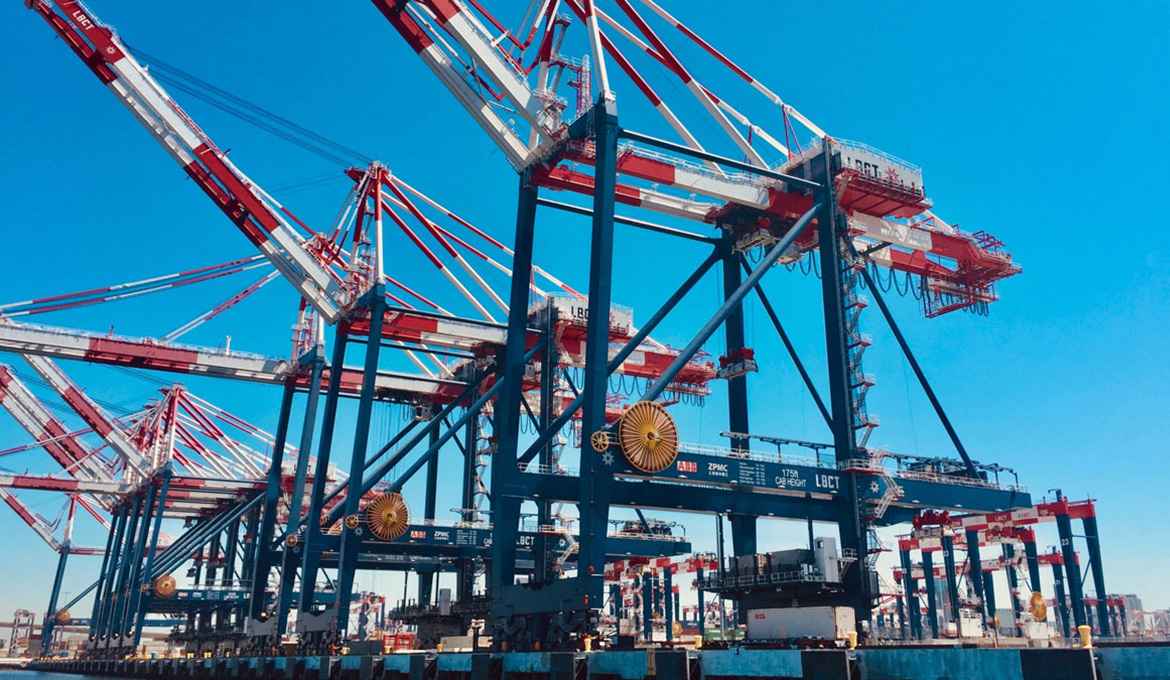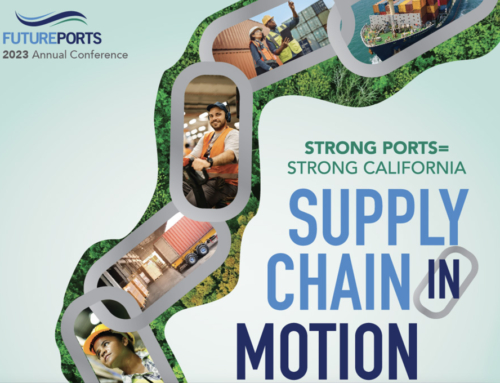The latest news on near-zero and zero emissions technology being tested at the San Pedro Bay ports.
Share This Story, Choose Your Platform!
A virus that attacks the lungs is a double threat to people suffering from asthma, respiratory illness and other health effects of pollution. This makes what the San Pedro Bay ports are doing to accelerate the deployment of clean cargo-moving equipment at the nation’s busiest port complex more crucial than ever.
Since 2007, TAP technology investment has totaled more than $408 million, with the LA and LB ports contributing $49 million. Click To TweetFor the latest on near-zero and zero emission demonstration projects at the ports of Los Angeles and Long Beach, check out their joint Technology Advancement Program (TAP) released March 2020. The report details all 17 collaborative projects underway or completed at the two ports during calendar year 2019. The role of private sector manufacturers, innovators and industry partners, as well as other government agencies, can’t be overstated. Since the first TAP demonstrations in 2007, the investment has totaled more than $408 million, with the two ports contributing $49 million.
Many current projects are part of large-scale demonstrations at working terminals and involve testing trucks and off-road equipment powered by electricity, ultra-low nitrogen oxide, hydrogen fuel cell technology, and natural gas. Most incorporate pioneering uses of battery-electric power in cargo handling equipment, such as yard tractors, forklifts, and top handlers. This heavy-duty equipment also needs charging infrastructure—a network of electrical conduit, wires, switchboards, transformers and switchgears. Ironically, while we’re still recharging our phones and computers by plugging into the electric grid every day, the ports are testing inductive, or wireless, charging systems. It’s mind-boggling. Batteries are advancing, and brilliant technical minds are using them to develop use more complex applications. Not just for equipment but also for harbor craft such as electric-drive tugboats.
Of course, not everything can be electrified, and certainly not at once. That’s why the ports are also testing stop-and-start technologies that can immediately reduce fuel consumption and vehicle emissions.
The ports are testing stop-and-start technologies that can immediately reduce fuel consumption and vehicle emissions. Click To TweetAdvanced solutions are being developed for anything that moves cargo, including massive ocean-going vessels. For these big ships, slowing down while approaching the harbor and switching to cleaner-burning fuels are no-brainers. Thankfully, the newest megaships in the world fleet are built with energy efficiency and pollution control features. Ships that carry up to 10,000 TEUs—now considered midsize—will require major retrofits. Experts are designing, manufacturing and verifying emission control devices whose acronyms everyone is grateful for: active diesel particulate filters (ADPFs), diesel oxidation catalysts (DOCs), and selective catalytic reduction (SCR) systems. Before the costly upgrades can be justified for a whole fleet, individual ships serve as guinea pigs. If the modifications work, similar retrofits can be adapted for harbor craft, tugboats and commercial fishing boats.
TAP demonstrations also involve designing and deploying technology to collect tons of data to evaluate the various equipment configurations, their features, and how to build a better pollution “mousetrap.” Before new machinery can be widely adopted, it must be safe and functional. The data also helps regulators verify the clean air benefits and certify new systems and technologies. These include intelligent transportation systems for drayage trucks.
A virus that attacks the lungs is a double threat to people suffering from respiratory illness and other health effects of pollution. Click To TweetTAP has facilitated the development and testing of transformative and exciting breakthroughs, as well as new applications for existing technologies. Additional benefits include sharing best practices and lessons learned across the supply chain, and some projects incorporate an educational component so local students can learn about the zero-emission technologies and future careers opportunities.
The annual TAP report also previews priorities for the year 2020. For details, see the PDF here.



